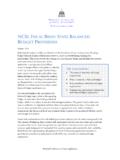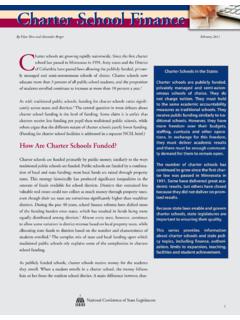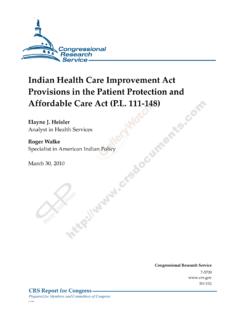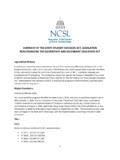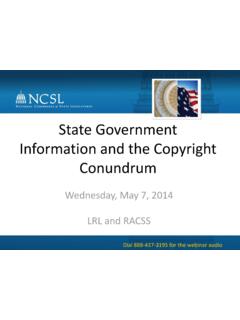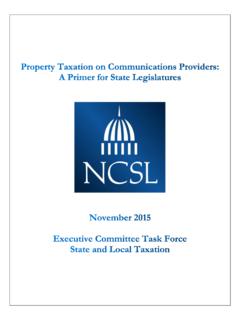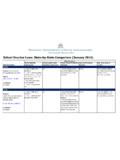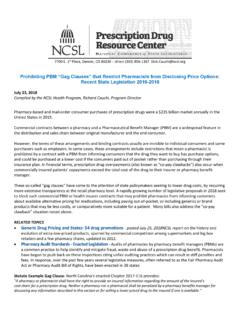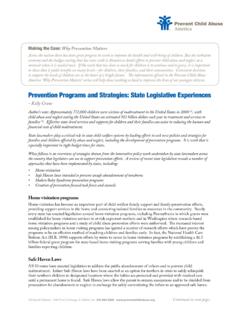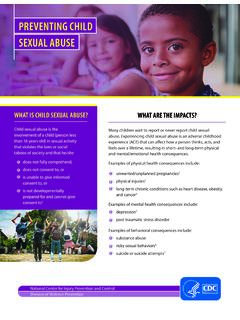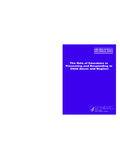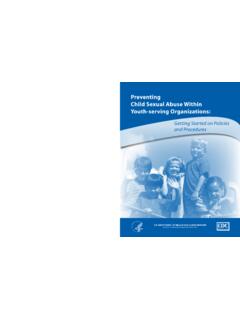Transcription of State Policies Addressing Child Abuse and Neglect
1 State Policies Addressing Child Abuse and Neglect By hOLLIE hENDRIKSON and Kate Blackman aUGUST 2015. E. very year in the United States, hundreds of thousands of children are victims of Child Abuse and Neglect . Often collectively referred to as Child maltreatment, Abuse and Neglect are generally defined as actions or omissions of a parent or caregiver that result in serious harm to a Child . One in four children experience Child Abuse or Neglect at some point in his or her The consequences of Abuse and Neglect are long-term and pervasive: Children who are victims are more likely to engage in risky behaviors as adolescents and experience poor health status into adulthood, including substance Abuse , depression, cardio- vascular disease and diabetes. However, Child Abuse and Neglect are largely preventable, and there are ways to minimize these burdens to both the Child and community.
2 Many public health advocates, community leaders and policymakers are implementing successful approaches to prevent Child Abuse and Neglect . This paper outlines proven strategies and highlights promising and innova- tive solutions. Some of these strategies have also proven to be a positive investment for states reducing costs in other health and human service programs down the line. Better Definitions Lead to Better Solutions: What Is Child Abuse and Neglect ? Defining Child Abuse and Neglect is an important first step in developing preventive policy solutions. Child maltreatment is often broken up into two distinct categories Abuse and Neglect . Child Abuse and Neglect often occur in combination. Child Abuse is intentional or deliberate acts of harm, or threats of harm, committed against a Child . Three different types of Child Abuse include: Physical Abuse is the intentional use of physical force against a Child , such as hitting, kicking, choking, stabbing, shaking, burning or other actions that could result in physical injury.
3 Emotional Abuse refers to actions and behaviors that harm a Child 's sense of self-worth or emotional well-being. sexual Abuse involves engaging a Child in sexual acts, including fondling, rape and exposing a Child to other sexual activities. This type of Abuse is the most underreported type of Child maltreatment; actual rates of sexual Abuse against children are likely higher than those of- ficially reported. Child Neglect is the failure to meet a Child 's basic needs, including housing, food, clothing, educa- tion and access to medical care. The definition of Child Neglect varies among states, agencies and professional groups. Generally, Child Neglect can be defined as the failure to provide for a Child 's basic physical, emotional or educational needs, or failure to protect a Child from harm or potential harm. A parent or caregiver's failure to supervise a Child is also a type of Child Neglect .
4 Neglect is the most common type of maltreatment perpetrated against children, accounting for 78 percent of all reports. In some states, Child Neglect accounts for more than 90 percent of all Child maltreatment cases. Child Neglect includes: Physical Neglect is the failure to provide food, shelter or appropriate supervision. Medical Neglect is defined by many states as failing to provide needed medical or mental health care to a Child . Educational Neglect involves the failure of a parent or caregiver to educate a Child or provide for special educational needs. Emotional Neglect is the inattention to a Child 's emotional needs or failure to provide psycho- logical care. Failure to supervise is failing to ensure that a Child is not exposed to unnecessarily dangerous activities or environments. Source: Centers for Disease Control and Prevention, 2014.
5 2 | State Policies Addressing Child Abuse and Neglect 2015 National Conference of State Legislatures A Public Health Approach to Evidence-Based Policies and Preventing Child Abuse and Strategies to Prevent Child Abuse Neglect and Neglect The complex nature of the factors that protect or put chil- States have adopted evidence-based strategies, such as con- dren at risk for Abuse and Neglect have led many experts to necting new parents to community supports and providing recommend approaching prevention Policies in a compre- greater access to high-quality Child care, that aim to pre- hensive way. State legislation that focuses on one aspect of vent Child Abuse and Neglect before it occurs. These strate- Child Abuse prevention may not be as effective as Policies gies have been used by states and communities for years that address a broad range of social factors associated with and are considered foundational approaches to preventing parenting, caregiving and other issues that can have a posi- Child Abuse and Neglect .
6 Below are two examples of these tive influence on a Child 's well-being. types of programs. To promote Child safety and security, researchers often dis- Early Childhood Home Visiting cuss reducing risk factors that put children at risk of Abuse Early childhood home visitation programs provide support and Neglect , while also increasing protective factors that help and link families to appropriate services. Some help new shield children from maltreatment. parents gain basic parenting skills by matching new fami- lies with trained providers, such as nurses, social workers or Child Abuse and Neglect also occur within the context of a parent educators. These prevention-focused programs are larger set of factors, including social, physical and eco- voluntary, and are offered to new families as a connection nomic environments.
7 These circumstances the conditions to social and medical services throughout pregnancy and in which children are raised are referred to as the social during the first few years of life. determinants of health. Social determinants do not ex- ist in isolation; they are integrated and overlap with one The Nurse Family Partnership is the most extensively another. This integration of factors makes it more difficult evaluated early home visitation program. The program to pinpoint one strategy to address an issue like Child Abuse has been found to reduce Child Abuse and Neglect by 48. and Neglect . It also means that Addressing one factor has percent and emergency room visits for accidents and the potential to have a ripple effect on others. poisoning by 56 percent. In this program, nurses help new parents keep themselves and their babies healthy, link par- Parental stress, for example including the emotional or ents to services, and assist new families in continuing their financial anxiety associated with raising a Child is often education or finding work.
8 Durham Connects is another identified as a risk factor for Child Abuse and Neglect . Con- program that provides free in-home nurse visits to all new versely, safe, stable, nurturing relationships and environ- Durham County, North Carolina, parents to assess needs ments help prevent Child Abuse and Neglect . Creating sup- and foster connections with services, as needed. Research portive environments for families and strengthening social shows that this program resulted in higher-quality parent- support networks that reduce parental isolation and teach ing, more positive Child -parent interactions, fewer emer- positive parenting strategies are examples of protective gency room visits and greater use of support resources. factors parents with more social support and strategies to cope with stress may be less likely to Neglect or Abuse their More than 20 states have enacted legislation since 2008 to children.
9 Address home visitation effectiveness, accountability and continuous quality improvement, including comprehensive Developing public Policies that facilitate healthy caregiver- statewide home visitation definitions, standards, outcomes, Child relationships and support parents raising children in funding and reporting requirements. A full list of home difficult conditions are two broad strategies that can create visitation legislation passed between 2008 and 2014 can be safe, stable and nurturing relationships and environments found on NCSL's Home Visiting Web page. for children. 3 | State Policies Addressing Child Abuse and Neglect 2015 National Conference of State Legislatures Early Head Start Early Head Start is a federally funded program that offers Examples of Successful Treatment Pro- low-income pregnant women and families with children grams for Children and Families at Risk for under age 3 access to early learning and education in day or with Histories of Abuse and Neglect care settings and other family support services.
10 Many Enhanced primary care provides opportunities for profes- programs offer home-based services, which include weekly sionals to identify and address psychosocial problems within home visits from trained program staff to promote parents' the family ( , parental depression, substance Abuse , major or caregivers' ability to support the Child 's development. stress, intimate partner violence) that increase risk for Child Research indicates that the Early Head Start Program Abuse and Neglect . One such program is the Safe Environ- reduces Child Abuse . ment for Every Kid (SEEK). SEEK is located in the Center for Families within the Department of Pediatrics at the Uni- versity of Maryland School of Medicine. The program iden- All 50 states have at least one Early Head Start Program tifies and manages targeted risk factors for Child Abuse and that is funded primarily by the federal government.
